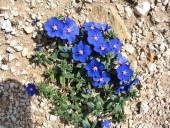
 7
7




Striving to grow things as naturally, simply, and cheaply as possible! 
My YouTube channel
 3
3




When in doubt, doubt the doubt.
 3
3




Striving to grow things as naturally, simply, and cheaply as possible! 
My YouTube channel
 2
2




Weeds are just plants with enough surplus will to live to withstand normal levels of gardening!--Alexandra Petri
 6
6





Striving to grow things as naturally, simply, and cheaply as possible! 
My YouTube channel




Mk Neal wrote:Cool!
Michael Fundaro, your fight against the beetles may be hindered by neighbors-- if you are surrounded by a lot of lawn grass, then the larvae are feasting on the grass roots before attacking your plants. There is a natural remedy called "milky spore," but unless neighbors treat also it may be futile.
When in doubt, doubt the doubt.
 4
4




Weeds are just plants with enough surplus will to live to withstand normal levels of gardening!--Alexandra Petri
 10
10




![Filename: IMG_1263.jpg
Description: [Thumbnail for IMG_1263.jpg]](/t/155996/a/132783/IMG_1263.jpg)
 5
5




 3
3




Ian Young wrote:
I'm going to look into what I can do to create habitat for robberflies now, and while we do have cardinals, maybe I'll work harder to specifically lure them to the garden.
Pecan Media: food forestry and forest garden ebooks
Now available: The Native Persimmon (centennial edition)
 4
4




 3
3




 4
4




Zone 6, 45 inches precipitation, hard clay soil




 1
1




 3
3




Paul Sofranko wrote:JB's have recently started invading my garden, but as far as I can tell, they are only being a pest with my potatoes. They aren't 'bugging' anything else.The only obvious difference that I can see regarding the potato patch and the rest of the garden is that I had extensively planted marigolds and basil around my tomatoes, zucchini and squash.
Perhaps the scent of the goldies and basil are keeping them away?




Ian Young wrote:
JBs have strong preferences about which leaves they prefer to eat, so more likely than being deterred from the other plants, they just preferred your potato leaves to the other options. I've even had them strongly prefer one variety of pole beans to another, in plants growing side by side on the same trellis.

 1
1




Gardens in my mind never need water
Castles in the air never have a wet basement
Well made buildings are fractal -- equally intelligent design at every level of detail.
Bright sparks remind others that they too can dance
What I am looking for is looking for me too!

 1
1




Pearl Sutton wrote:My weird thought of the day for JBs is they are attracted to their own pheromones... Is there some kind of essential oil or something I can spray on the plants I want protected that would mess up the smell for them? I'm thinking I have rose geranium oil, might try it, mix it with water...
SWD = spotted-wing drosophila
 1
1




Pearl Sutton wrote: They are sluggish and fall rather than fly on cool foggy mornings. Those days are beetle slaughter days here
 1
1




Michael Fundaro said, "I was hoping some sort of plant would kill or repel the beetle.
Invasive plants are Earth's way of insisting we notice her medicines. Stephen Herrod Buhner
Everyone learns what works by learning what doesn't work. Stephen Herrod Buhner
 2
2




 4
4




 5
5




Daniel
 4
4




Striving to grow things as naturally, simply, and cheaply as possible! 
My YouTube channel
 2
2




Steve Thorn wrote:
Some of my apples produced for the first time this year and they were completely no spray. Here are a picture of two different varieties that I harvested last week. Even though we have extreme bug problems in my area, these apples were pretty much completely damage free.
Here's a picture of them after a little bit of polishing up with just a wet cloth. No one grows apples in my area, much less no spray apples, and I don't think it would have been possible without the small army of beneficial bugs and other animals doing their wonderful things.
 2
2




Daniel
 3
3




 4
4








Daniel Kaplan wrote:Good to hear that it wasn't just a one-off year with no JBs.
Daniel
 1
1




John Daley Bendigo, Australia The Enemy of progress is the hope of a perfect plan
Benefits of rainfall collection https://permies.com/t/88043/benefits-rainfall-collection
GOOD DEBT/ BAD DEBT https://permies.com/t/179218/mortgages-good-debt-bad-debt

|
Be the Mr. Rogers of your neighborhood. This tiny ad will help you:
The new kickstarter is now live!
https://www.kickstarter.com/projects/paulwheaton/garden-cards
|








